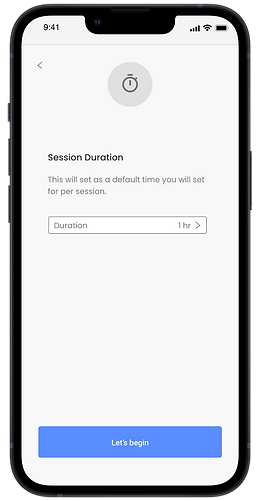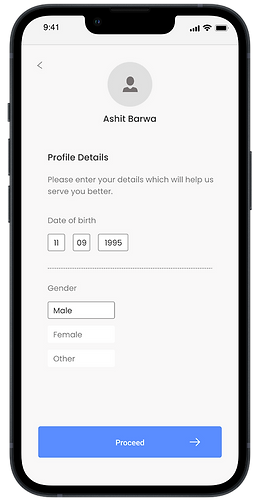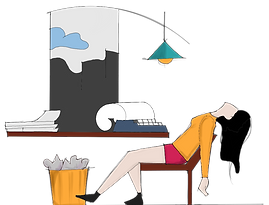
Welcome to SOMNUM
A product that helps the user enjoy that pre sleep time. A good sleep can keep the user energised for the following day thereby improving productivity and focus. Its a product that promotes life and an experience that attempts to bring the user to a more relaxed and a natural state of mind with a user friendly approach.

Duration
6 weeks
Problem Solving
Product Design
What is SOMNUM
Somnum is an IOT product, that attempts to solve the problem of Sleep Onset Latency among the users. It positions itself as a pre bed time routine, and helps the user get their ideal quality sleep. A good quality sleep can keep the users feeling energised and ready to face the new day.
How does it work?
It uses Foot reflexology as a technique which involves applying pressure to different points at the bottom of the foot. It focuses on the pressure points on the sole of our feet where these points correspond to different areas of the body. They have multiple benefits including:
Reducing Stress
Provide Relaxation
Aiding Digestion
Improves Sleep
Reduce Eye Strain
Linings of charged nodes at intervals for stimulation
Temperature adjusted
Sweat resistant

Ultra thin patch
These stimulations mimic the actions of reflexology
IOT product

1.
Put the product on before going to bed
2.
Connect to your smart phone app
3.
You can set the sensation strength and time duration in the app
4.
The product will adjust to your temperature and feel a part of you
5.
Gentle vibrating stimulation in a rhythm will help the body calm down and relax





Reflexology and Electrical Muscle Stimulation (EMS)
EMS therapy creates steady electric impulses that stimulate muscle contractions--many of them over a sustained therapy session.
There are multiple forms of EMS therapies. One form of EMS therapy called TENS (transcutaneous electrical nerve stimulation) which works on nerves rather than muscles.
TENS therapy can issue electrical stimulation at different wavelengths for different purposes (relaxation, circulation, blocking pain) and can be performed at home. TENS therapy, is normally used to manage pain (acute or chronic), rather than working with muscle function. Many varieties of TENS devices can be purchased without a prescription for use at home.
Activity section reads the users activity from average body temp. recorded to average sleep received
Under Goals the user can set customised goals for the app to keep track of - like optimum number of sleep hours needed
Navigation bar highlighting the core features

Connection status indicator
Shows the connectivity and status of the product with the app
Streak of using the app every night also acts as a recall factor
Recommendations section for the app to suggest to the user based on their daily activities
Homepage

Login / Sign up
One time Login process for the first time user

Session duration
Session duration
Session duration
How long the product functions before it goes to sleep

Security code
Security code section to validate the profile

Session
Sessions section to either continue the left session or start a new one

Profile details
Profile details to get to know the user better and customise features

Profile
Profile section to access features related to the user profile

Settings
Settings to access or change certain features of the product
The Process

How it began?
In my initial stage of enquiry I started with Digital Isolation as a topic to look further into how technology and our devices are creating a gap between generations and among each other of the same generation. Why its becoming so normal to stay in isolation inspite of living and sharing the same space physically. The research led me to the specific topic of Insomnia which finally helped me arrive at Sleep onset Latency as the area of design intervention.
Technology has started creating gaps in connecting with people
People now prefer to be left in isolation than interacting with others
Socialising has become an anxiety provoking task
It has become even harder for people from older generation to keep up with the technological advanced generation
Conversations have reduced
Why Insomnia is an area of concern?
As people move towards a hectic lifestyle, for most of us, restful sleep has become a luxury. Indians sleep for six hours per night. This sleep deficit can lead to several health consequences like weight gain, diabetes, heart disease, stroke, and memory loss. It can also affect productivity at work. With the lifestyle getting more hectic and stressful. People are concerned about physical wellbeing and know the importance of good sleep.


Secondary Research
Harmful effects of light emitting screens on users sleep
Time Displacement
Psychological stimulation
Light emitting screens

Key findings on some major effects of screen usage before bedtime results in:
Leads to behavioural bedtime delay
from media content disrupting sleep
Screen related Insomnia is a common sleep disorder that can make it hard to fall asleep, hard to stay asleep, or cause you to wake up too early and not be able to get back to sleep. You may still feel tired when you wake up. Insomnia can sap not only your energy level and mood but also your health, work performance and quality of life.
Disruption in circadian rhythm

Leads to weight gain, impulsivity, slower thinking
Social media near bedtime
Interactive screen media use may have a greater impact on sleep than passive use

Adolescents report using media at bedtime to "help" them fall asleep
Screen habits among infants
Target User - 16 to 26 year olds
They are our first 'Digital Natives'
They are pragmatic and financially minded
Many factors contribute to their mental health challenges
They are politically progressive
They are shrewd consumers

Why do I even think this is a problem?





Primary Research
Survey Insights
Survey was conducted with 37 respondents taking part in the survey. The age group of the respondents was between 17 to 26 years old. In this context, screen time is directly related to the increased use of the devices.
62%
Users were on their phones upto 8-10 hours a day
57%
Respondents felt time spent on their phones was affecting their offline life
73%
Did not keep track of their screen time
67%
Have felt the need to calm their minds
57%
Have recognised the need to reduce their screen time
60%
Respondents din't follow any practice / tool to calm themselves
Interview Insights
Interview was conducted with 3 participants.
"
Too much time spent on Insta made me compare my life with others which further made me feel sad about my life and depressed.
"
"
Now even If I get call from friends I pick up only once I am free.
"
"
As a family we have all stopped using our phones while having dinner.
"
"
I have switched off notifications, which otherwise leads to further scrolling and you are not aware of how much time is wasted.
"
Interview & Survey Analysis
Conducting survey and carrying out focus group interviews helped to have a better understanding of the problem and pin point the area of focus gathered after deeper insights.
1.
Excessive use of devices was making it harder for the users to have a relaxed mind, mood and body.
2.
Increased sleep onset latency leaves the users feeling tired and deprived throughout the day.
3.
Social media is directly related to the users addiction to their smart phone devices. Policing an activity is not appreciated by the users.
Conducting survey and carrying out focus group interviews helped to have a better understanding of the problem and pin point the area of focus gathered after deeper insights.
Practices Adopted & Changes Experienced

Empathy Map

User Persona
About
NAME: Ruhi Singh
PROFESSION: Visual Designer
LOCATION: Haryana
AGE: 23 years
About
NAME: Ritu Sharma
PROFESSION: Self Employed
LOCATION: Dehradun
AGE: 25 years
About
NAME: Sharang Nath
PROFESSION: Masters student
LOCATION: Guwahati
AGE: 27 years
Motivations
Conscious of mental health
Meditates everyday
Has deleted all unwanted apps
Pain Points
Finds phone usage distracting
Has to spend whole day in front of screens
Finds using earphones and phones night necessary but also hassling
Motivations
Aware and appreciates social attention
Relatively active on social media platforms the most
Likes to read a book before sleep to calm self
Pain Points
Aware of harmful effects of excessive screen usage
Using excessive phone makes it harder to sleep at night and focus
Motivations
keeps very close circle of friends
Spends a lot of time gaming on the phone
Not very active on social media platforms
Pain Points
Spends 8 - 10 hours on phone daily
Doesn't feel guilty of spending too much time on phone
Finds audio stories relaxing to help sleep
Scenario
Different nights, same problem
Neha struggles to get proper sleep and it affects her daily life.

Sleeping with phone and devices at night to relax yourself

Disturbs your sleep to wake up to put devices aside

Excessive exposure to screens throughout the day leads to drained energy levels

Irregular sleep can leave you feeling tired at night and the following day

Low energy levels and increased stress affects the focus and overall wellbeing
Needs and Requirements
Improve Sleep Onset
Natural to use
Improve Focus
Hassle Free
Delightful to use




Insights
01
The need is realised to reduce the screen time but the user is not aware how to go about it and where to start.
02
One problem is picking up the phone for no reason and opening apps at random times.
03
Irritation in mood is another problem caused by excessive use of screen devices.
04
After spending so much time on the phone there is always a feeling of regret.
05
Another problem is spending so much time on the phone that not realising how much time has been wasted.
Precedents
There are different products in the market that have different approaches to solve the same problem. I went through a range of products which are trying to solve this problem...
Somnox
Soft huggable robotic pillow that you take to bed at night. It utilises breathing regulation, sounds and 'affection' to help people struggling with insomnia, anxiety related sleep issues, or those who just want to sleep easier
Dodow
The device works by projecting a blue light onto your ceiling which pulses at scientifically determined intervals, by synchronyzing your breathing to the rhythm of light.
Welltiss Mind
Welltiss mind is a PEMF (Pulsed Electro Magnetic Field) wearable and app released in 2020. The device uses electromagnetic field therapy for non chemical stress relief, better sleep and improved concentration. welltiss mind helps you calm mind when necessary and promotes feelings of deep rest and rejuvenation.



Design Challenge
Improve the sleep experience by reducing the sleep onset latency and help the user relax after a tiring day to provide an overall relaxing experience and thereby promoting an improved and a healthier lifestyle.
How might we?
Information Architecture

Task Flow - 1
Start a session of peaceful relaxation for your pre bed time routine.

Link to full project documentation
Thank you for viewing